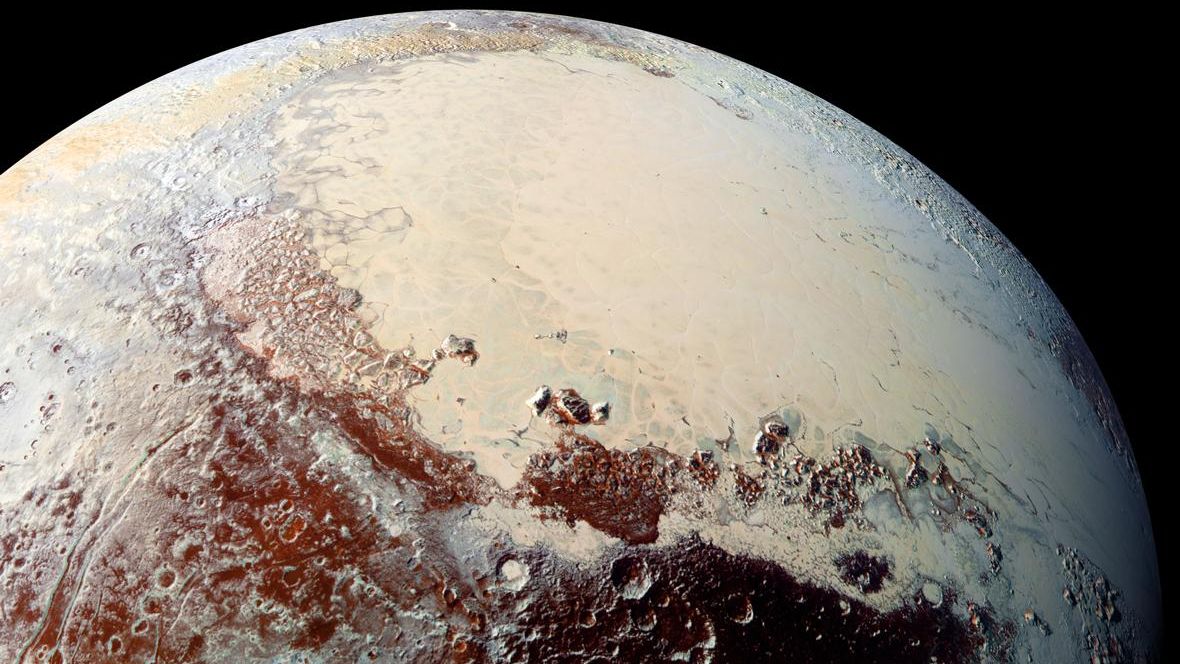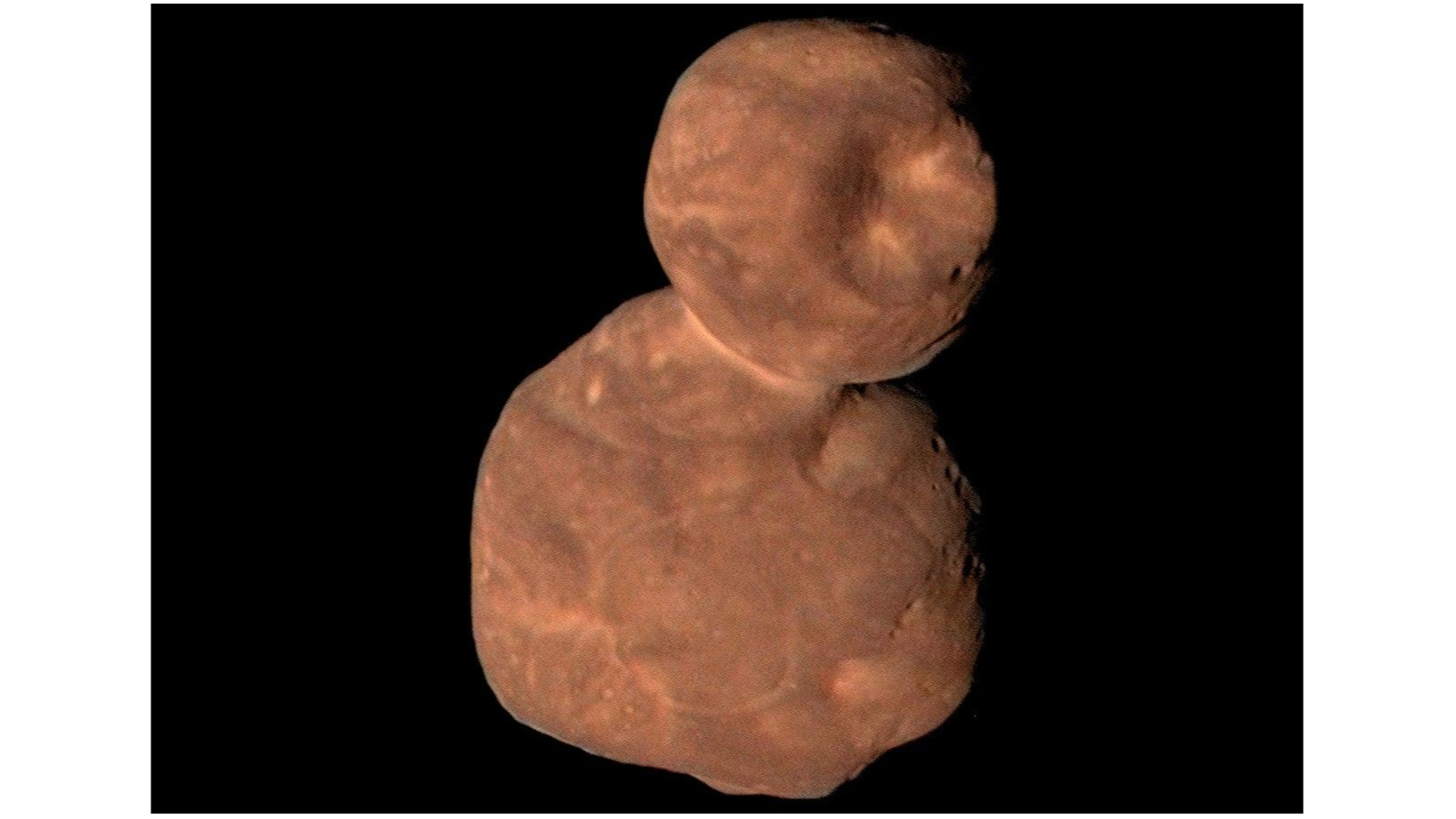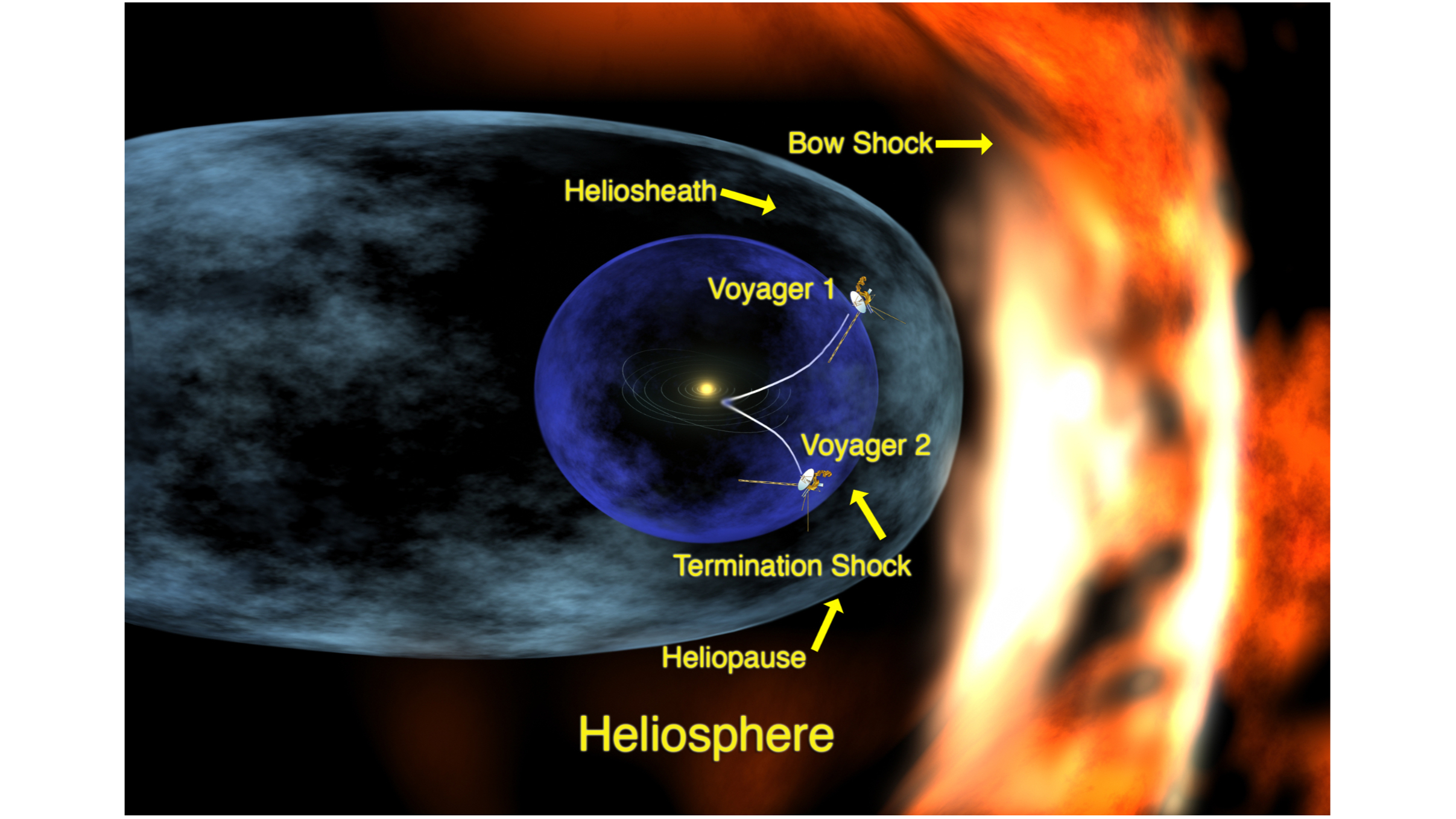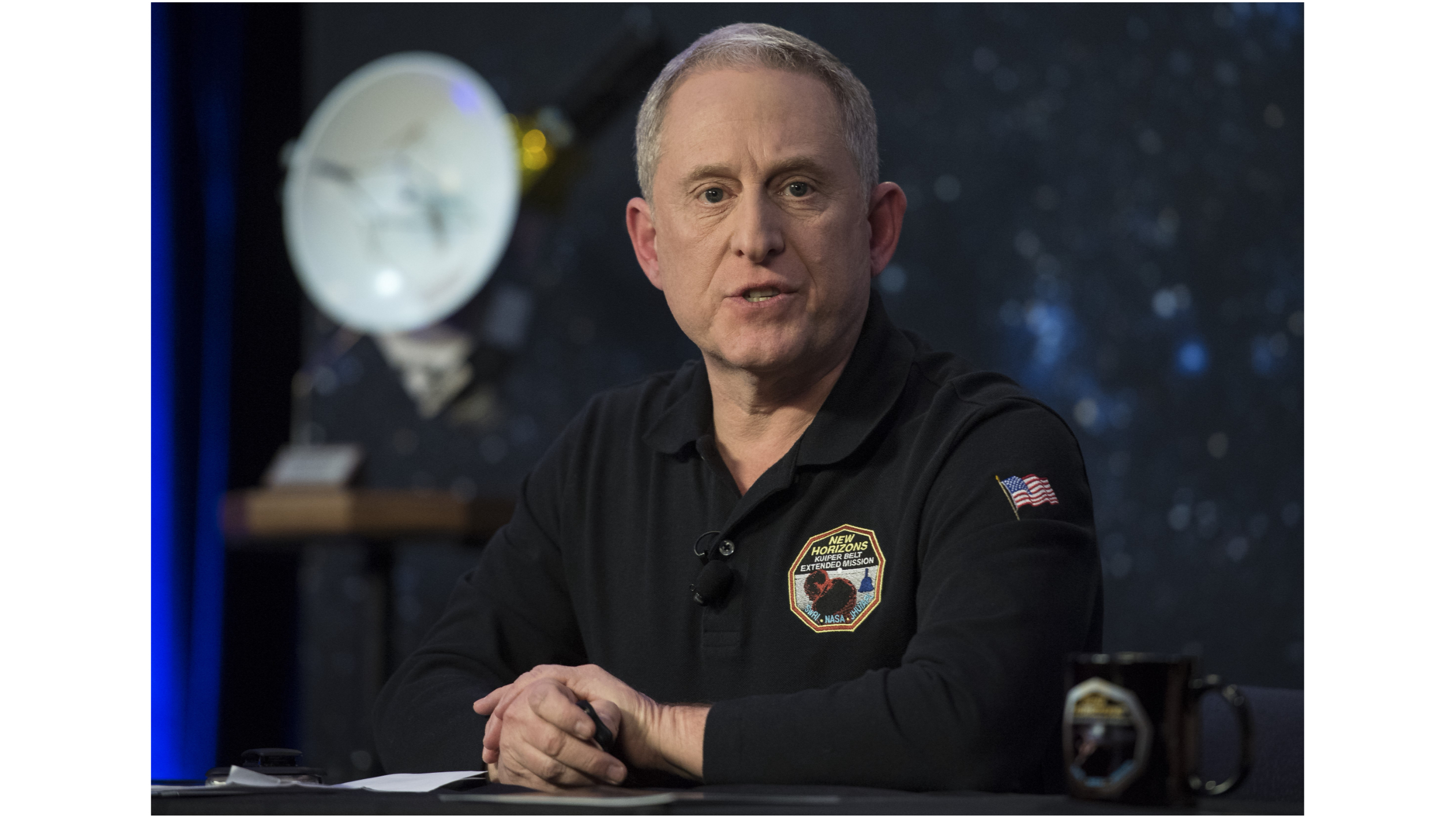
The New Horizons spacecraft, launched by NASA, made history with its groundbreaking flyby of the Pluto system in July 2015, marking the first and only close encounter with this distant planet.
Continuing its journey, the probe achieved another milestone with its flyby of Arrokoth, a Kuiper Belt Object (KBO), on January 1, 2019. Located beyond Neptune in a region known as the Kuiper Belt, this icy body represents a remnant from the early days of our solar system.
Looking ahead, New Horizons is set to launch further scientific exploration that promises to uncover more about our solar neighborhood.

Valuable Findings
Recently, a report from the U.S. National Academies, titled “The Next Decade of Discovery in Solar and Space Physics: Exploring and Safeguarding Humanity’s Home in Space,” emphasized the critical need to continue receiving invaluable data from the New Horizons and Voyager spacecraft. These observations are crucial for understanding the outer heliosphere and the environment beyond the heliospheric bubble.
Related: New Horizons: Exploring Pluto and Beyond
The report also noted that exploring the boundary of the solar system, where the sun’s influence diminishes, holds significant potential for discovery.
Alan Stern, the Principal Investigator for New Horizons at the Southwest Research Institute in Boulder, Colorado, highlighted that this decadal heliospheric report serves as an independent endorsement of the importance and uniqueness of the scientific contributions made by New Horizons.
According to Stern, New Horizons is preparing to encounter the sun’s “termination shock,” a region where the subsonic solar wind slows and changes as it interacts with the interstellar medium.
Related: New Discoveries from the New Horizons Pluto Probe in the Outer Solar System
The Unknown Timeline
Although New Horizons is currently in hibernation mode, it continues to gather heliophysics data, which is stored in its onboard memory system. Stern explained, “We entered hibernation on October 3 last year and aim to resume operations by April 2. Upon waking, we will relay the accumulated New Horizons data back to NASA’s Deep Space Network.”
“However, predicting when we will cross the termination shock is uncertain. It might happen as soon as 2027, but we want to be prepared for it,” Stern added.
Fortunately, the spacecraft remains in excellent condition. “There are no issues with the spacecraft or its seven instruments; they are operating just as well as they did when we launched,” he noted.
Related: New Discoveries from the New Horizons Pluto Probe in the Outer Solar System

Fuel Conservation Efforts
However, New Horizons is running low on fuel, which necessitates careful management of its resources. “We have to be very careful with our fuel expenditure as every unit spent limits the chances of future KBO flybys,” Stern explained.
As a result of this challenge, Stern has adopted a new informal title: “Chief Fuel Saver.”
In terms of power supply and data transmission, the spacecraft is well-equipped. Its nuclear power system is expected to provide energy until about 2050, according to Stern.
Could New Horizons potentially make another KBO flyby? There’s a chance if collaborations with Earth-based observatories, like the soon-to-be operational Vera C. Rubin Observatory, help identify KBOs along a trajectory that New Horizons could reach. “This would greatly enhance our odds for a flyby, but it’s a difficult task even with the best observatories,” Stern noted.
Related: NASA’s New Horizons Probe Provides the Best Estimate of the Universe’s Darkness
Exploring Unanswered Challenges
Meanwhile, a dedicated heliophysics team aboard New Horizons, comprising about a dozen scientists and engineers, is thoroughly analyzing spacecraft data related to the outer heliosphere. Andrew Poppe from the Space Sciences Laboratory at UC Berkeley, a co-investigator and the science lead for heliophysics on the New Horizons mission, emphasized the upcoming journey across the termination shock, a significant boundary between our heliosphere and interstellar space. “Both Voyager probes previously crossed this boundary, yielding remarkable data, yet several vital questions remain unanswered, particularly around a subset of ions known as ‘pickup ions,’” Poppe remarked.
He noted that the importance of understanding these pickup ions has become increasingly clear, as they may play a pivotal role in energy and momentum transfer at the termination shock.

Pioneering Measurements
Fortunately, New Horizons is equipped with advanced instruments— the Solar Wind Around Pluto (SWAP) and the Pluto Energetic Particle Spectrometer Science Investigation (PEPSSI)— that will enable the first-ever measurements of these crucial pickup ions in the outer heliosphere and during the termination shock encounter.
“Understanding these ions is vital, so our team has been diligently planning specific observational modes and data transmission strategies, an intricate task given the vast distance from Earth,” Poppe commented. “We are also collaborating with the wider theoretical community concerned with outer heliospheric phenomena to prepare for the groundbreaking data that New Horizons will soon provide.”
The New Horizons team is honored to carry forward the legacy of Voyager, Poppe added, “while eagerly anticipating the unique contributions we can make regarding the outer limits of the heliosphere that we call home.”
Anticipating a Historic Encounter
The crossing of the termination shock could be a brief event, lasting as little as 10 minutes, according to Pontus Brandt, the New Horizons project scientist at the Johns Hopkins University Applied Physics Laboratory (APL) in Laurel, Maryland.
“However, there is likely to be a series of crossings as the shock oscillates around the spacecraft for several days, presenting another historic opportunity for New Horizons,” Brandt shared.
“The data acquired during this encounter will provide invaluable insights for physicists worldwide, eager to explore how this vast boundary operates,” Brandt stated. “The discoveries from pioneering missions like Voyager and New Horizons illuminate just how much we have yet to learn about the universe and lay the groundwork for future pursuits, such as an Interstellar Probe mission.”
The Spirit of Discovery
Brandt underscores the potential for significant findings with New Horizons yet to come. “We might only be scratching the surface when it comes to understanding the full extent of the Kuiper Belt, which could be far more extensive than we ever imagined,” he said. “The continual detection of dust particles exceeds our expectations regarding a ‘Kuiper Cliff.’ We must always make room for new discoveries— it’s the essence of exploration,” Brandt emphasized.
In the upcoming years, New Horizons might find itself within a newly identified region of the Kuiper Belt, presenting a historic opportunity for planetary science that could have critical implications for understanding exoplanetary systems.
Anticipating New Discoveries
As a pioneering spacecraft, New Horizons has already made significant contributions, being the first spacecraft to conduct close observations of Pluto and its moons. After its nine-year journey, it also passed its second major target, the KBO Arrokoth, in 2019, becoming the most distant object ever closely studied.
The findings from New Horizons will take center stage at a forthcoming 10th-anniversary science meeting commemorating the Pluto flyby, set for this July at APL, where the spacecraft was designed and is operated for NASA.
“We are consolidating all the knowledge gained since New Horizons’ Pluto flyby, incorporating insights from the Hubble Space Telescope, the James Webb Space Telescope, and other Earth-based observations,” Stern concluded. “So stay tuned, as I anticipate some new surprises!”









